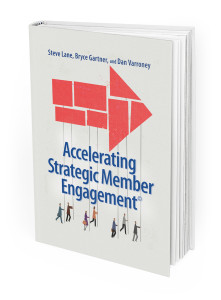Why Mentors Matter to Association CEO’s
For years, hard working executives build a path to the corner office. Then the day arrives, they’ve achieved their professional ambition and become an Association CEO. Where do they turn for unfettered strategic guidance? What about Chief Executives struggling to achieve revenue growth, or the CEO wanting to take the Association to the next level of performance? Clearly an effective board and skilled senior management team make a difference, but one question remains. Do CEO’s, regardless of circumstances, have a safe space they can go to obtain good feedback?
In today’s uncertain environment being at the top of the staff pyramid is challenging on good days and daunting on bad days. Wary Association Executives also know they need to tread lightly as there might be a political agenda hiding behind issues. Having a mentor, an objective impartial perspective, can make a big difference in how things work out for CEO’s.
Mentors Provide Safe Space
Whether be symptoms or even perceived red flags, CEOs need perspective in order to make sure the Association satisfies its members, grows revenues and achieves its mission. One Association staff leader likened his environment to a busy day to a walk through the world’s busiest airport, “chaotic with everyone going in their own direction.” Another leader defined their experience as “herding cats in a thunder storm.”
Interestingly enough the August 2012 issue of Workforce Magazine, a University of Phoenix Alumni Association publication, cited a Fortune 500 Survey that “75% of Fortune 500 CEOs cited mentoring as one of the top three factors in their own career success.” Knowing this, Association CEOs could also be well served with effective mentors.
How does a CEO determine what Type of Mentor they Need?
Regardless of time in the position or tenure at an Association, identifying one or more mentors is something every CEO can and should do. First, however, an executive needs to develop a self profile based on the following:
1. What is the current situation? New CEO, first time CEO, promoted from within, etc.
2. Are the issues facing the Association strategy or management and execution related?
3. What is the feedback from Board Leadership, colleagues and staff?
4. An inventory of skills, strengths and weaknesses.
Develop four buckets, determine the drivers within each of the four categories and formulate a theme of issues that need to be addressed. Now a CEO is ready to determine the type of mentor that can be most helpful.
Next and Necessary Steps
A mentor can be a CEO colleague, a retired Executive, or a working professional not connected with the Association space. What matters most is a current Association Executive having the capacity to take a step back and assess what can be done to grow, improve and become a high performing leader.
Recruiting a mentor is straightforward, but it’s critical to have a one page summary outlining the 4 bucket strategy with clearly focused objectives. The person you approach wants to know you’ve thought it through and you want their honest and objective guidance moving forward. There is no time limit, that is something a CEO and the prospective mentors determine in their work together.
A former colleague asked if more than one mentor could be helpful. Yes, as long as the objectives and desired outcomes are understood by both parties, more than one mentor can also be an effective strategy.
Why Mentors Matter to Association CEO’s
In a July 7, 2006 CEO Update article reflecting the complexity of issues facing today’s Executives ” CEO Departures: What Went Wrong?” CEO tenure mirrors corporate America with an average span of only five years. While there are other factors that weigh heavily on CEO transitions, having a mentor can help a busy Chief Executive avoid the inevitable pitfalls.
Mentors can, do, and will matter for Association CEOs. Having skilled, qualified and impartial observers provides the right level perspective and objectivity that makes a difference.
 Free eBook “Accelerating Strategic Member Engagement” is available for all Association Executives at www.potomaccore.com,www.icimo.com,and www.verticalleapconsulting.com.
Free eBook “Accelerating Strategic Member Engagement” is available for all Association Executives at www.potomaccore.com,www.icimo.com,and www.verticalleapconsulting.com.
 Even if the reason for change is delicate, leaders who want their culture to change cannot ignore the reason for change. People will trust leaders who explain why the organization needs to get its costs down in order to stay competitive, or the fact that the budget is not growing as fast as the demand for services requiring cost control.
Even if the reason for change is delicate, leaders who want their culture to change cannot ignore the reason for change. People will trust leaders who explain why the organization needs to get its costs down in order to stay competitive, or the fact that the budget is not growing as fast as the demand for services requiring cost control.

